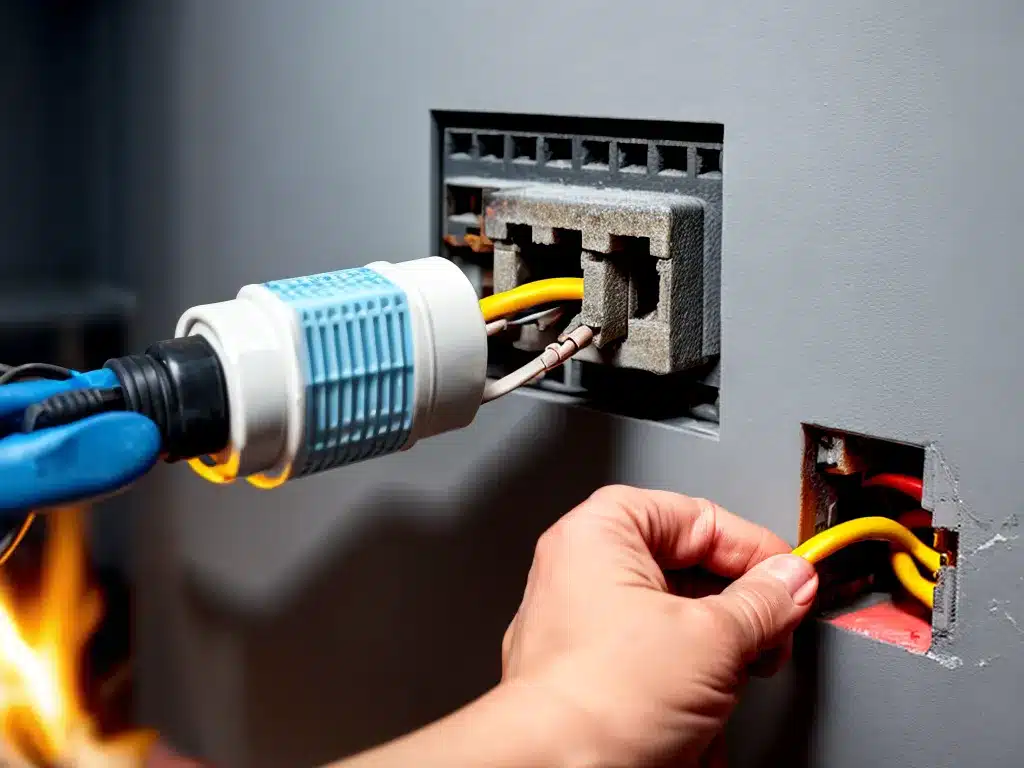 Reduce Electrical Fire Risks With Proper Socket Maintenance” />
Reduce Electrical Fire Risks With Proper Socket Maintenance” />
How to Reduce Electrical Fire Risks With Proper Socket Maintenance
Introduction
Electrical fires are a leading cause of home fires, resulting in over 50,000 fires each year in the United States alone. Many of these fires start at electrical outlets and can be prevented with proper socket maintenance. Proper socket maintenance is critical for reducing electrical fire risks in the home. In this article, I will provide an in-depth look at the causes of electrical fires, the risks of overlooked socket maintenance, and actionable steps you can take to make your home safer.
Causes of Electrical Fires
Electrical fires are most often caused by electrical faults, or damage and defects within the electrical system. The most common causes of electrical fires include:
-
Faulty wiring and connections – Outdated wiring, loose connections, and cord damage can lead to sparks and excessive heat that can ignite fires.
-
Overloaded circuits and outlets – Plugging too many appliances into one outlet or circuit can lead to overheating of wires and insulation.
-
Damaged or faulty appliances and electronics – Appliances and electronics with damaged or frayed cords are more likely to malfunction and spark fires.
-
Water and liquid exposure – Moisture contacting outlets or electronics can cause shocks, sparks, and fires.
-
Rodents and wildlife chewing on wires – Animal damage to electrical wiring insulation exposes wires to potential sparks and heat.
Many of these fire risks originate right at the electrical outlets and sockets around your home. Routine inspection and maintenance of these outlets is key to reducing electrical fire hazards.
Risks of Overlooked Socket Maintenance
Failing to routinely check and maintain electrical sockets and outlets puts your home at a higher risk of electrical fires. Some key risks include:
-
Damaged outlets – Cracked, loose, or broken outlets enable sparks, heat, and shocks that can ignite fires.
-
Faulty connections – Loose plugs, cords, and wires allow dangerous arcs and resistance heating.
-
Dust and debris accumulation – Built-up dust and dirt traps moisture and enables tracking (leaked currents).
-
Overloaded and high-use outlets – Frequently used outlets near appliances are at higher fire risk when overloaded.
-
Outdated wiring and outlets – Older outlets and wiring tend to deteriorate over decades of use.
-
Lack of ground fault and arc fault protection – Modern protective devices help prevent fires but are often missing in older homes.
Neglecting minor socket issues now can allow them to become substantial fire hazards later. Establishing socket inspection and maintenance habits reduces preventable electrical fire risks.
Steps to Reduce Electrical Fire Risks
Here are key steps I recommend to improve electrical socket maintenance and reduce fire risks:
Inspect All Electrical Outlets Regularly
-
Check outlets monthly for any signs of damage, overheating, or arcs/sparks. Look for discoloration, melting, cracks, and warmth coming from outlets.
-
Unplug appliances and remove outlet covers to inspect wiring connections. Check for loose, damaged, or frayed wires.
-
Test outlets annually with an $8 outlet tester to detect wiring faults like reversed polarity, improper grounding, or open neutrals.
Replace Any Damaged Outlets and Wiring
-
Replace any cracked, melted, or otherwise damaged outlets immediately.
-
Rewire any loose, damaged, or deteriorated wire connections.
-
Upgrade outdated wiring to modern 12 or 14 gauge electrical wire and grounding.
Clean Outlets to Prevent Dust and Debris Buildup
-
Unplug appliances and use a dry toothbrush to brush out any built-up dust.
-
Use a vacuum with a brush attachment to remove dust from recesses.
-
Wipe outlets with a dry microfiber cloth to remove surface dirt.
Avoid Overloading Outlets
-
Do not plug power strips or multi-outlet converters into other power strips. Overloaded power strips become fire hazards.
-
Major appliances like refrigerators, stoves, and washing machines should have dedicated outlets.
-
Consider installing additional outlets to reduce the need for overloading any single outlet.
Install Arc Fault and Ground Fault Circuit Interrupters
-
AFCIs detect dangerous electrical arcs in wiring and shut off power to prevent fires.
-
GFCIs shut off faulty circuits rapidly if abnormal current flows occur, protecting against shocks and fires.
Conclusion
Performing simple monthly outlet inspections, annual outlet testing, and proactively replacing any damaged wiring and outlets can significantly reduce electrical fire risks. Investing a small amount of time and money in socket maintenance and safety devices prevents catastrophic fires and protects your home and family. Being aware of fire hazards, overloading issues, and the warning signs like sparks or discolored/warm outlets allows you to act quickly to improve safety. Proper socket maintenance combined with updated wiring and modern protective devices keeps your home’s electrical system running safely for years to come.
